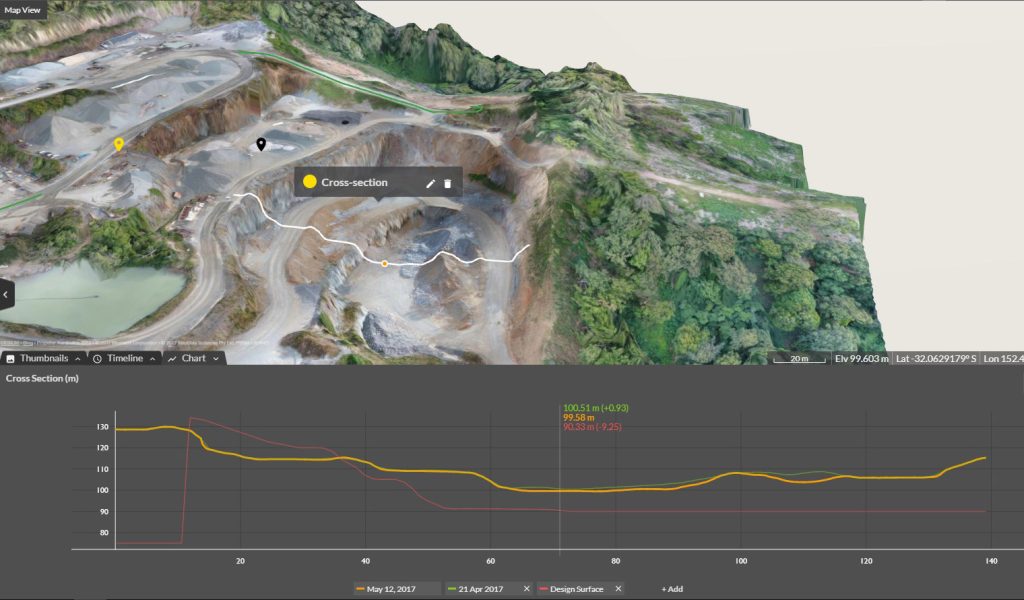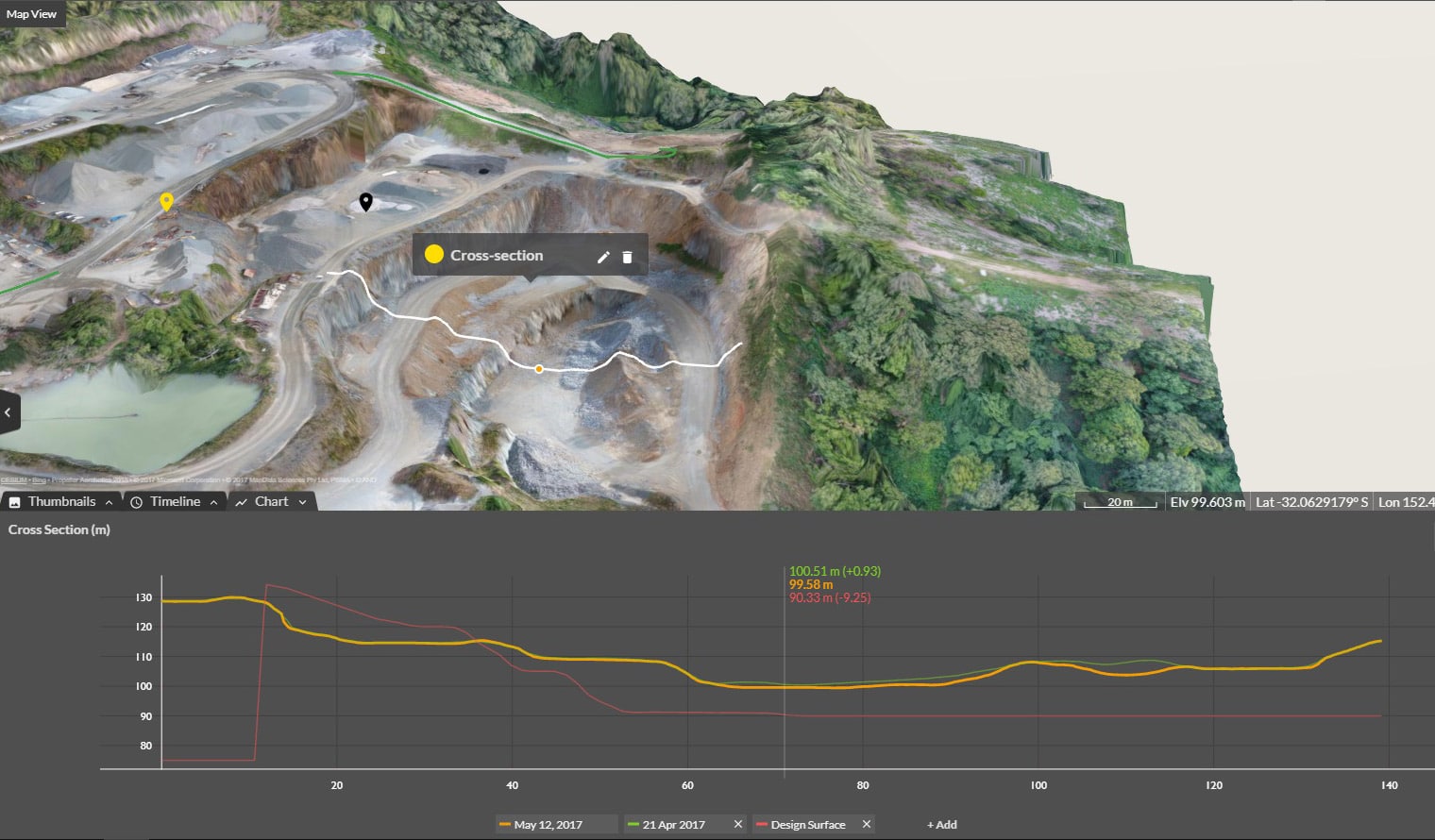With the power of drone-captured data and the Propeller Platform, surveying cross sections becomes as easy as drawing a line on a map. We’ve just updated our line annotation tools to include a cross section view.

This feature of the Propeller Platform will be very useful for anyone needing to estimate and track earth moving works in road and site construction, in mines, quarries or on landfill sites, as well as for anyone doing as-built surveys during the different stages of construction to ensure that the project is conforming to the design plans and regulations.
A cross section gives you an immediate sense of the height differences between site designs and the actual terrain at any given time.
On the Propeller Platform you can create as many cross sections as you want, anywhere on your worksite. This enables you to easily and visually compare between multiple 3D surfaces (such as a previous month’s data or site design files), check profile and heights at any point of any section that you choose.
As an example, in less than a minute you can check if a road base, subgrade, or finished surface fits within the variation permitted against design requirements. In the video below, we have used our line annotation feature to create a cross section of a road surface under construction (the orange line), and then compared it against it’s design file (the green line).
You can check the elevation (and variance) at any point by moving your mouse pointer along the line, and it will also show progress against the line annotation in the Map View with an orange circle. As you can see in the video, an added feature is that you can choose the location of cross section tool—in the side panel or below the map.
In the next example we demonstrate how the new cross section tool can be used on a landfill site to check cell conformance against the design surface. You can see how easy it is to make a comparison between multiple data sets on the same graph.
As you can see from the videos, roadworks and landfill cells are just two of the many applications for the cross-section feature, with grading, leveling, and compaction measurement also common uses.



